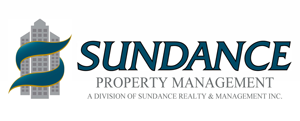
As an owner of a commercial property, you know how important it is to have a realistic and accurate budget.
A budget helps you plan, track your income and expenses, and make informed decisions about your property. However, creating and managing a budget can be challenging, especially if you have multiple tenants, variable costs, and unexpected events. In this blog post, we will share a 5 step plan and some tips on how to create and manage a budget for your commercial property.
Step 1: Gather information.
The first step in creating a budget is to gather all the relevant information about your property. This includes:
- The current rent roll, which shows the occupancy rate, lease terms, rent amount, and security deposits of each tenant.
- The historical income and expenses of the property, which can be obtained from your accounting records or financial statements.
- The projected income and expenses of the property, which can be based on market trends, inflation rates, contractual obligations, and anticipated changes in occupancy or rent.
- The capital improvement plan, which outlines the major repairs or upgrades that you plan to make to the property soon.
Step 2: Calculate income.
The next step is to calculate the income of your property. This includes:
- The gross potential income (GPI), which is the total amount of rent and Common Area Costs (CAC) reimbursement that you could collect if all the units were occupied and paid at the market rate.
- The vacancy and credit loss (VCL), which is the amount of income that you lose due to vacant units or non-payment of rent & share of Common Area Costs (CAC).
- The effective gross income (EGI), which is the GPI minus the VCL.
- The other income, which is any additional income that you receive from sources such as parking fees, signage fees, late fees, or reimbursements.
The total income of your property is the EGI plus the other income.
Step 3: Calculate operating expenses.
The next step is to calculate the expenses of your property. This includes:
- The fixed expenses, which are the costs that do not vary with occupancy or usage, such as property taxes, insurance, or management fees.
- The variable expenses, which are the costs that vary with occupancy or usage, such as utilities, maintenance, repairs, landscaping, or advertising.
- The reserve for replacements / structural reserve (RFR), which is the amount that you set aside each month for future capital improvements.
The total expenses of your property are the fixed expenses plus the variable expenses plus the RFR.
Step 4: Calculate net operating income.
The next step is to calculate the net operating income (NOI) of your property. This is the amount of income that remains after deducting all the operating expenses from the total income. The NOI is a key indicator of the profitability and performance of your property.
Step 5: Adjust for cash flow.
The last step is to adjust the NOI for cash flow. This is the amount of money that you receive or spend each month. To calculate the cash flow, you need to subtract any non-cash items from the NOI, such as depreciation, or amortization. You also need to add or subtract any cash items that are not included in the NOI, such as capital expenditures, loan proceeds, or loan payments.
The cash flow is the amount of money that you can use to pay yourself, reinvest in your property, or save for emergencies.
Tips for managing your budget.
Once you have created your budget, you need to monitor and update it regularly. Here are some tips for managing your budget effectively:
- Compare your actual income and expenses with your budgeted amounts each month. Identify any variances and analyze their causes. Adjust your budget accordingly if there are significant changes in your assumptions or projections.
- Review your rent roll and occupancy rate frequently. Make sure that you are collecting rent on time and enforcing lease terms. Adjust your rent levels according to market conditions and tenant demand.
- Review your capital improvement plan periodically. Prioritize the projects that will increase the value or appeal of your property. Allocate funds for emergencies or contingencies.
- Communicate with your tenants regularly. Solicit feedback on their satisfaction and needs. Address any issues or complaints promptly. Maintain a good relationship with them to retain their loyalty and reduce turnover.
- Communicate with your lenders regularly. Report on your financial performance and compliance with loan covenants. Negotiate favorable terms or refinancing options if needed.
